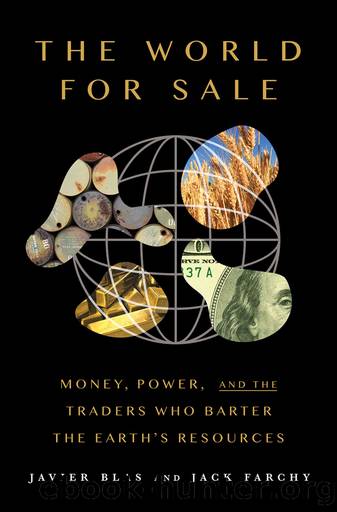The World For Sale by Javier Blas

Author:Javier Blas
Language: eng
Format: epub
Publisher: Oxford University Press
Published: 2021-03-15T00:00:00+00:00
The oil-for-food scandal was emblematic of the commodity industryâs new era of scarcity. For the next decade, low prices would be a distant memory, and commodity traders would fall over one another to secure the precious raw materials necessary to feed China and other emerging marketsâ seemingly bottomless appetites for commodities. And oil was the most prized resource of all.
The commodity boom really picked up steam in the second half of 2003 and into 2004. The oil industry was already operating close to full capacity. Nearly two decades of low prices had curtailed investment in oilfields, pipelines and refineries, so there was not enough new supply to match booming global demand, which in 2004 had the biggest increase since 1978.17 Prices soared past $40 a barrel for the first time since the first Gulf War, and then surpassed $50 for the first time ever (see graph on page 334).
In many ways, it was a repeat of the 1970s. Politicians in consuming countries showed the same anxiety as OPEC regained its power. The price of gasoline became a staple of news bulletins. There were apocalyptic warnings about the exhaustion of the worldâs oil reserves.
And for the traders, the race for oil meant a new era of riches. Growing Chinese demand required a drastic increase in Chinaâs imports, and that meant that more commodities needed to be shipped around the world. Between 2000 and 2008, global trade in oil increased by 27.2%. That was more than twice the rate of oil demand growth over the same period.18 That, in turn, meant more business for the traders, whose core business was shipping commodities internationally.
Soaring prices also transformed the way the commodity traders made money. It was a time when pure and simple speculation worked: the market was clearly going up. Unlike the 1970s, it was now possible to bet on the price of oil on the futures markets, and many did. From 2001 until 2008, the average annual price for Brent crude was higher every year â the longest streak of yearly price increases in the history of the petroleum industry, going back to 1861.19
But speculation was not the only way that rising prices made the trading business more profitable. In some cases, long-term contracts that the traders had signed years earlier suddenly became enormously profitable. Glencore, for example, was able to buy alumina from Jamaica at a fixed price under its long-term contract, which had been renegotiated in 2000. When prices soared, the commodity trader was paying less than half the market price for its alumina.20
Even commodity deals agreed at market prices became highly profitable in the boom market. Thatâs because most physical commodity contracts include some tolerance on quantity, allowing the trader to buy or supply an agreed tonnage plus or minus a few percent. In normal times, this allowance, known in the industryâs jargon as âoptionalityâ, meant that a trader wouldnât be in breach of its contract if a shipment was found to be slightly larger or smaller than planned â an understandable possibility in a large-scale logistics business.
Download
This site does not store any files on its server. We only index and link to content provided by other sites. Please contact the content providers to delete copyright contents if any and email us, we'll remove relevant links or contents immediately.
The Fifteen Biggest Lies about the Economy: And Everything Else the Right Doesn't Want You to Know about Taxes, Jobs, and Corporate America by Joshua Holland(817)
The World For Sale by Javier Blas(619)
The Economist (20210109) by calibre(566)
Made in China by Anna Qu(540)
Philippines--Culture Smart! by Culture Smart!(503)
Boom and bust a global history of financial bubbles by Quinn William Turner John(486)
The Dictatorship of Woke Capital by Stephen R. Soukup(483)
Big Money by Kenneth P. Vogel(482)
Forex Trading All In One For Dummies by Mishra Mamta(479)
The Money Revolution by Anne Boden(471)
Tax the Rich! by Morris Pearl(460)
Mission Economy by Mariana Mazzucato(457)
Cross Winds: Adventure and Entrepreneurship in the Russian Far East by Myers Steven(456)
The New Retirement Savings Time Bomb by Ed Slott(449)
The Inflation Myth and the Wonderful World of Deflation by Mark Mobius(435)
Fundamentals of Finance by Mustafa Akan Arman Teksin Tevfik(419)
The Great Demographic Reversal by Charles Goodhart & Manoj Pradhan(418)
How Finance Is Shaping the Economies of China, Japan, and Korea by Hugh Patrick(407)
Business Recoded by Peter Fisk(406)
